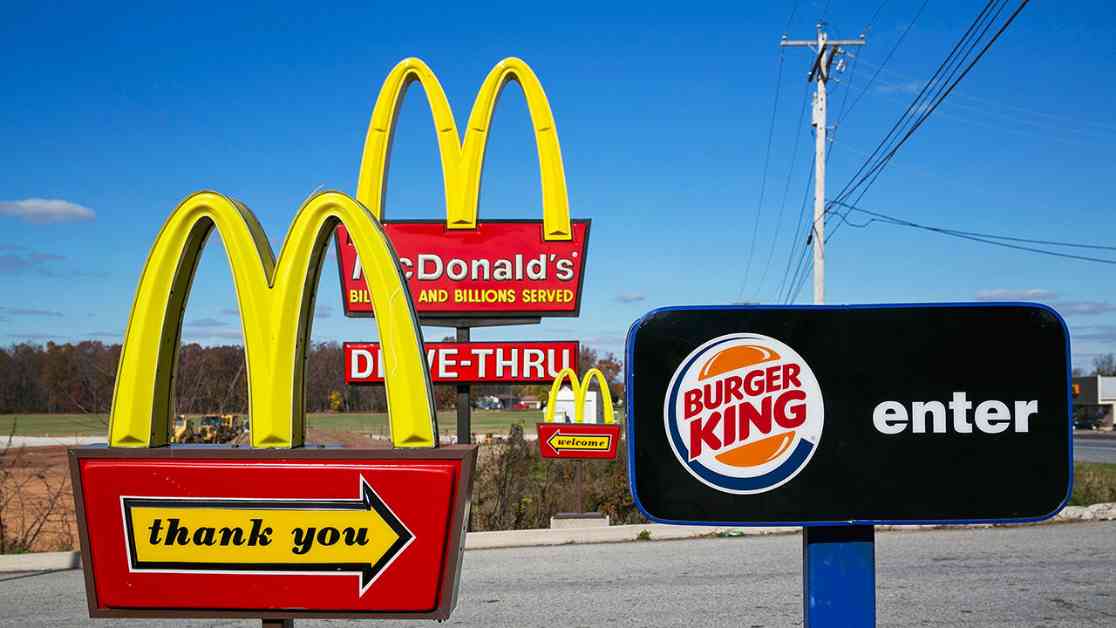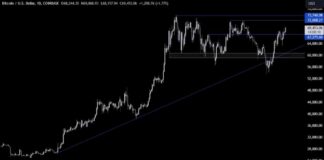Fast Food Price War Impact on Inflation: McDonald’s vs Burger King
The fast-food industry is heating up as McDonald’s and Burger King engage in a fierce price war, much to the delight of American consumers. This battle for market dominance has not only captured the attention of hungry customers but also raised eyebrows among Federal Reserve officials monitoring inflation rates.
Price Wars: A $5 Meal Whichever You Pick
In an effort to attract budget-conscious diners, both McDonald’s and Burger King have rolled out promotional deals offering complete meals for just $5. This aggressive pricing strategy has sparked a frenzy of excitement among customers looking to stretch their dollars without sacrificing taste or convenience.
For McDonald’s, known for its iconic Big Mac and golden fries, the pressure to compete with Burger King’s value meals has been intense. The fast-food giant has had to rethink its pricing structure and menu offerings to stay relevant in the face of stiff competition. This has resulted in a boon for consumers, who now have more affordable options when dining out.
Burger King, on the other hand, has seized the opportunity to gain market share by undercutting McDonald’s prices and enticing customers with irresistible deals. The chain’s signature flame-grilled burgers and crispy chicken sandwiches have become even more appealing with the addition of value combos that include sides and a drink for just $5.
Impact on Inflation: A Delicate Balance
As McDonald’s and Burger King duke it out in the fast-food arena, economists and policymakers are keeping a close eye on how this price war could affect inflation. While lower prices at popular chains may seem like a win for consumers in the short term, there are concerns about the broader economic implications.
Federal Reserve officials are monitoring the situation closely, as they must strike a delicate balance between promoting consumer spending and keeping inflation in check. The central bank’s dual mandate of maintaining price stability and maximizing employment requires careful consideration of how changes in consumer behavior, such as increased spending on discounted fast food, could impact the overall economy.
Inflationary pressures can arise when businesses engage in aggressive price competition, leading to lower profit margins and potential job losses. While the $5 meal deals at McDonald’s and Burger King may be a boon for cash-strapped consumers, they could also signal a broader trend of deflationary pressures in the economy.
The Krabby Patty Effect: Lessons from SpongeBob SquarePants
In the whimsical world of “SpongeBob SquarePants,” Mr. Krabs, the shrewd owner of the Krusty Krab restaurant, is portrayed as a ruthless price-gouger who takes advantage of his monopoly on the iconic Krabby Patty. His only competition, the lackluster Chum Bucket run by Plankton, pales in comparison to the culinary delights offered at the Krusty Krab.
While the antics of SpongeBob and his friends may seem far-fetched, there are valuable lessons to be learned from Mr. Krabs’s business tactics. The concept of pricing power, or the ability to set prices above costs without losing customers, is a fundamental aspect of competitive strategy in the fast-food industry.
McDonald’s, despite its global reach and brand recognition, does not wield the same pricing power as Mr. Krabs. The fast-food giant must navigate a competitive landscape where value-conscious consumers are constantly seeking the best deals. By engaging in a price war with Burger King, McDonald’s is attempting to maintain its market share and appeal to cost-conscious diners.
In conclusion, the fast-food price war between McDonald’s and Burger King is not just about $5 meal deals—it’s a reflection of broader economic trends and consumer preferences. As these two industry giants battle it out for supremacy, the impact on inflation and the overall economy remains to be seen. For now, hungry customers can enjoy the spoils of this competition while economists and policymakers analyze the implications for the future.

















